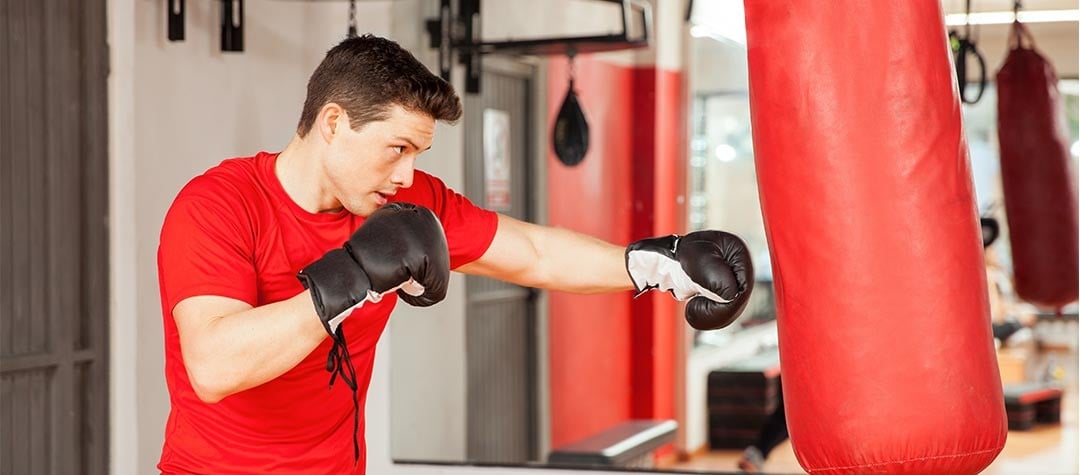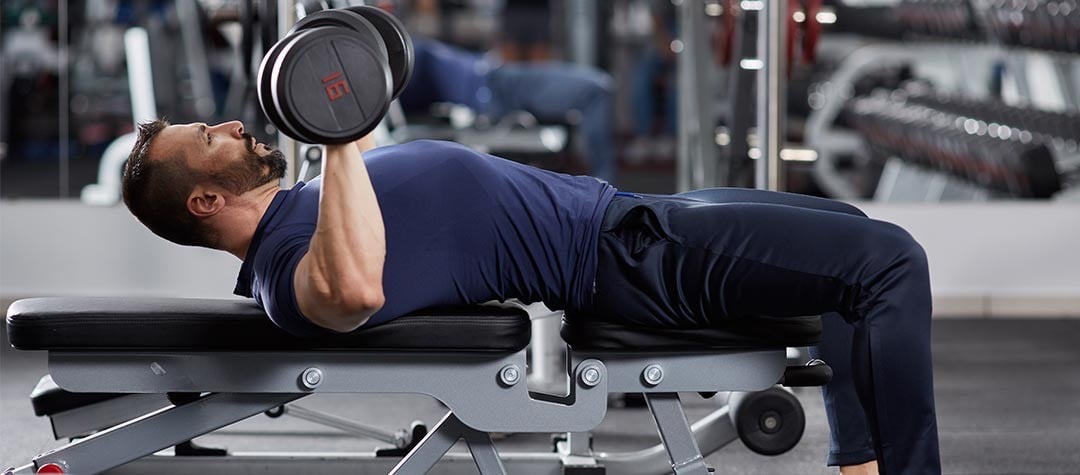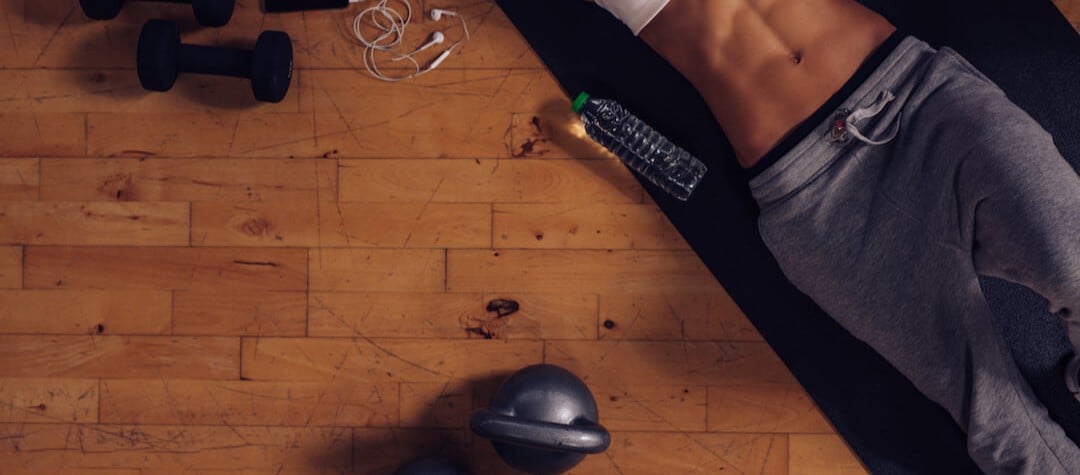Think that your fitness regime is spot on? Not surprisingly some men do make training mistakes and consistently, the dirty dozen are outlined here.
You can almost smell the testosterone in the gym when men go anywhere near the gym. Some of them can be transported right back to the playground with a, ‘I can lift more than you’ or ‘I can run faster than you’ mentality. But showing and then sustaining an injury, isn’t the only mistake men make. Oh no. There are plenty of other fitness mistakes that men make both in the gym and outside it.
1. No long term target
Everyone needs a target. Whether it’s to lose a set amount of weight or run a certain race, we all need things to aim for. So don’t fling yourself into a new hobby without any idea where you’re going with it. The reality is you will lose interest and give up after a while, because you have nothing to work towards.
Men tend to be a little less organised in life in general, but don’t make that mistake when it comes to fitness, because if you do, your gym membership or running career is destined to be short-lived.
2. Doing the wrong workout
It’s easy to get caught up in the enthusiasm of having a new hobby or enjoying a new sport. Even better if you’ve followed our advice and made a plan with proper achievable targets. However, and here’s the problem – those targets are useless if they are unachievable.
A lot of people say they would ‘like’ to run a marathon, but doing it is altogether different. There is no point aiming to do that, if running just isn’t for you. So be honest with yourself. Pick something you enjoy and will stick at.
3. Focusing on only one muscle group
Now come on. We’ve all seen ‘that guy’ on the beach. The fellow strolling around with enormous biceps, a neck like a bulldog, concrete abs and the skinniest legs you have ever seen. That kind of imbalance not only looks silly, but it also makes you injury prone. And it holds men back because the muscle groups in the legs are the powerhouse of the whole body.
Remember a full body workout boosts the metabolism, increases muscle strength and enables anyone to go further with their training. So whether it is lifting weights in the gym, or pounding the streets in pursuit of a marathon or half marathon, make sure you give your body the full fitness treatment.
4. A strong core
Part of that full body workout is making sure you have a strong core. We’re not talking about it in an emotional ying and yang sense. Nope, we’re talking abs of steel that don’t just look good on the beach, but stabilise your whole athletic effort.
A strong core improves running, weight training, well actually pretty much everything really. Men often ignore it because they like the idea of arms with bulging biceps and triceps, without realising that core work is central to being balanced athlete overall.
5. Neglecting cardio
Related to the point above, getting that rock-hard, defined six-pack is something most men strive for. Yet, if you want a killer six-pack make sure you don’t skip your cardio sessions as these are the very thing that will help you lose that layer of fat that is currently disguising your abdominal muscles. Try to do between three and six aerobic training sessions a week, spending between 20 to 60 minutes per session doing these exercises.
Another mistake men make when it comes to their abs is to do with the amount of time they spend working out. A study conducted by the University of Arkansas found that those people who worked hard for short periods of time lost more abdominal fat in three months than those that worked less hard, but for longer. So if you’ve been committing to long sessions, think about cutting back and doing more in less time. Supersets or interval training are perfect exercises to try if you want to give this a go.
6. Quality not quantity
Again, there’s no point in doing 100 sit-ups if you’re not doing them properly. It’s the same with mileage on the road. There’s no point doing 10km at the same slow pace if you’ve got intentions of being a faster. Progression comes about by pushing yourself that bit more each time.
Think about the quality of what you’re doing rather than the quantity. Tons of sit-ups tallied up may look impressive, but ultimately if carried out incorrectly they are pointless, and could cause an injury and postural imbalance if they’re done incorrectly and are not focusing on the right areas.
7. Not getting enough protein
If you don’t eat enough protein you are making a big diet mistake. Every man needs protein. In fact it is recommended that men should eat 56 grams of protein each day and the Institute of Medicine suggests at least 10 per cent of your daily calories should derive from protein sources.
Protein is so important because it is responsible for maintaining and building muscles. It also keeps you feeling fuller for longer. This means you won’t be so tempted to snack on unhealthy foods between meals and need to eat less at meal times. Meat, fish, eggs, cottage cheese and nuts are all excellent sources of protein. Be careful though, too much protein can negatively affect key body parts, such as your liver or your kidneys, so stick to that 56 gram recommendation.
8. Skipping red meat
Another diet mistake you may be making is skipping red meat altogether. In recent years there has been a lot of bad press around red meat and many believe it to be an unhealthy option. Yet red meat contains lots of nutrients and minerals that we need.
For example, red meat is very high in iron and with new trimming techniques it has been found that red meat is leaner than it has been in the past. Although you shouldn’t eat too much red meat (the World Cancer Research Fund found that we should not eat more than 500g of red meat each week) a nice, fresh steak or a pork dish now and again can be good for you.
9. Too much weight
If you are using weights in the gym, it is tempting to try and impress the ladies by lifting the equivalent of a small car. However, while that may bring you the temporary satisfaction of thinking you’re a player, the painful reality of your rampant ego will hit you like that same car the next day, when you can’t move.
Injuring yourself because you’ve had a mad moment brought on by testosterone or ego will get you nowhere. Breathe. Take a moment and be sensible. It’s a marathon not a sprint – quite literally sometimes.
10. Rest between weight sets
To get all of the benefits out of weights sessions you need to make sure you are taking breaks between your sets. This is because rest periods between sets allow your phosphagen levels to recover, which in turn enables you to have more muscular force when you next lift compared to if you had not rested. Similarly, long rest periods (between three to five minutes long) are thought to be good for those lifting heavy weights because a longer rest period can result in higher testosterone levels.
So, rest periods are great because they allow your phosphagen and testosterone levels to recover, which means you are able to lift more for longer. If you are going to start taking rests between sets make sure you change the amount of time you rest for to suit the exercise you are doing, as different lifts require different breaks.
11. Vary your running workouts and intensity
Most runners worry about the effect running can have on their bodies, in particular their knees. If you’re one such runner and you work out on a treadmill in an effort to avoid the negative side effects running on harder surfaces can have on your body, you are making a mistake. Running on a treadmill really does not put significantly less strain on your knees. Instead of using a treadmill you should mix your running sessions with other cardio-based exercises, such as cycling or swimming to help reduce risk of injury and wear.
Another common mistake is running steadily in all of your sessions. Running steadily is great for your endurance, but it doesn’t help you to run faster and you need to mix up your sessions, running some steadily and some quickly. Interval training is the perfect way to mix up your sessions and ensure you progress.
12. Stretching
Do you stretch before a workout? If you do then it’s possible that you’re doing more harm than good. Stretching before a workout is generally considered not particularly beneficial and can damage your body. This is because stretching destabilises your muscles and if you are doing an exercise that requires a certain level of stability, such as weightlifting, then you will struggle.
Equally, stretching prior to a workout is bad because your muscles are cold and inelastic, meaning that stretching them could result in an injury. Instead of stretching before your workout do a warm-up of dynamic movements – your muscles will be grateful – and you can stretch post-workout when the muscles are fully warmed up.















